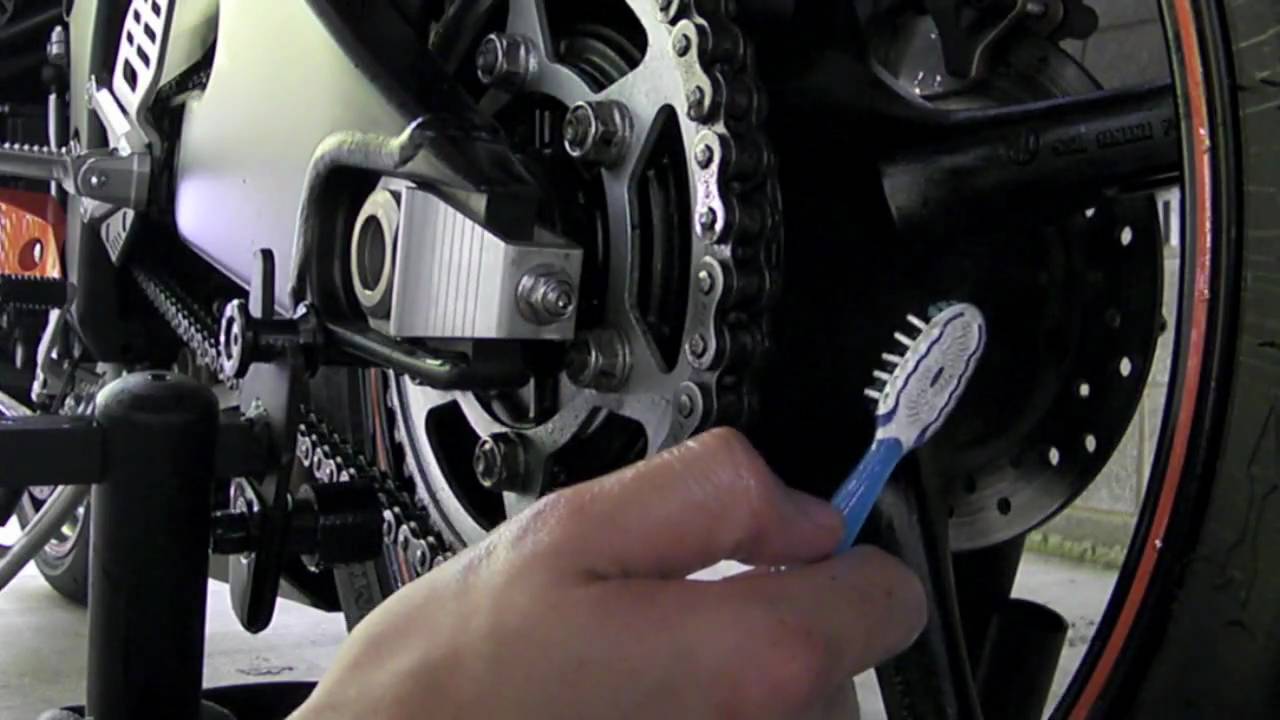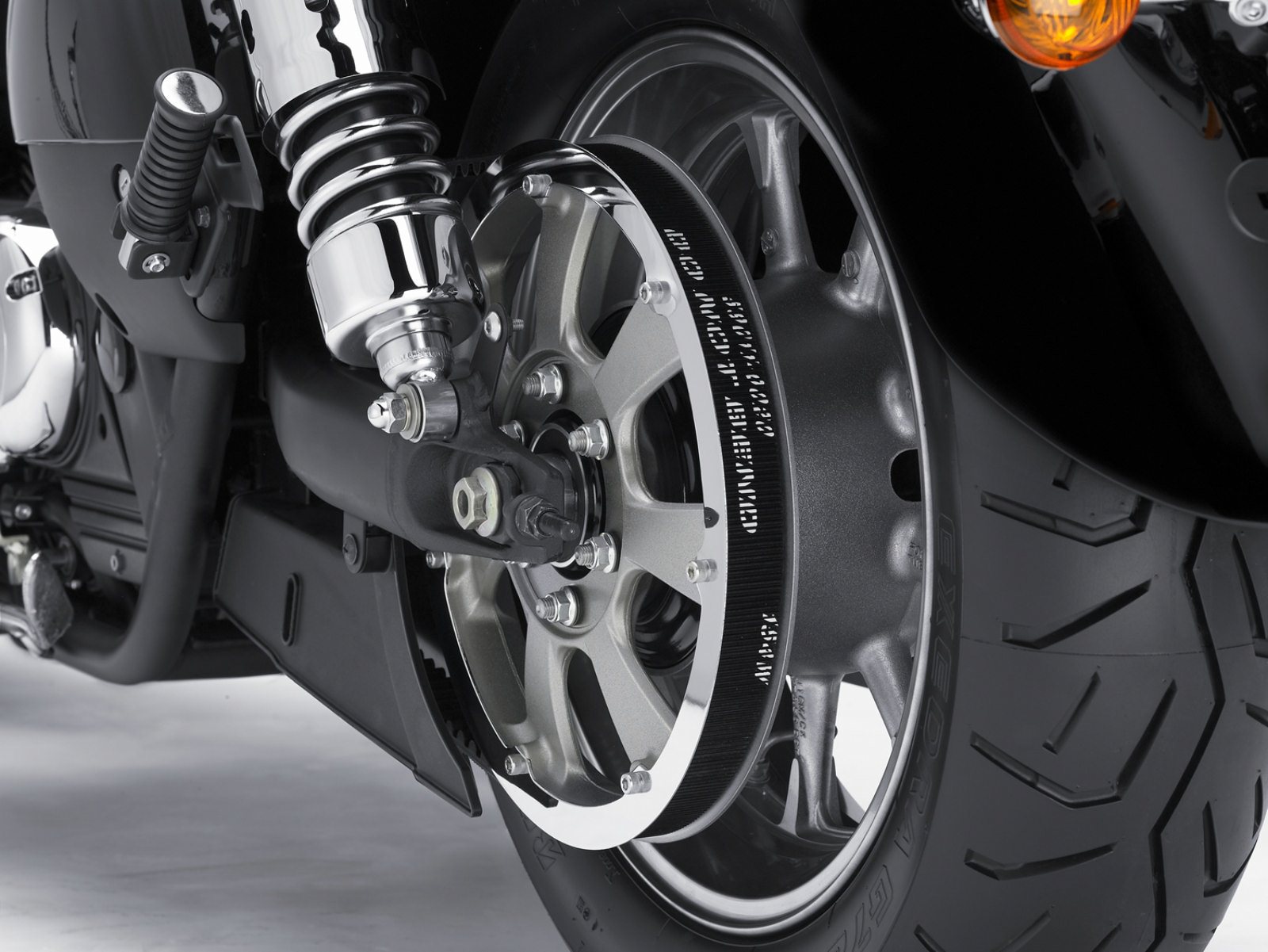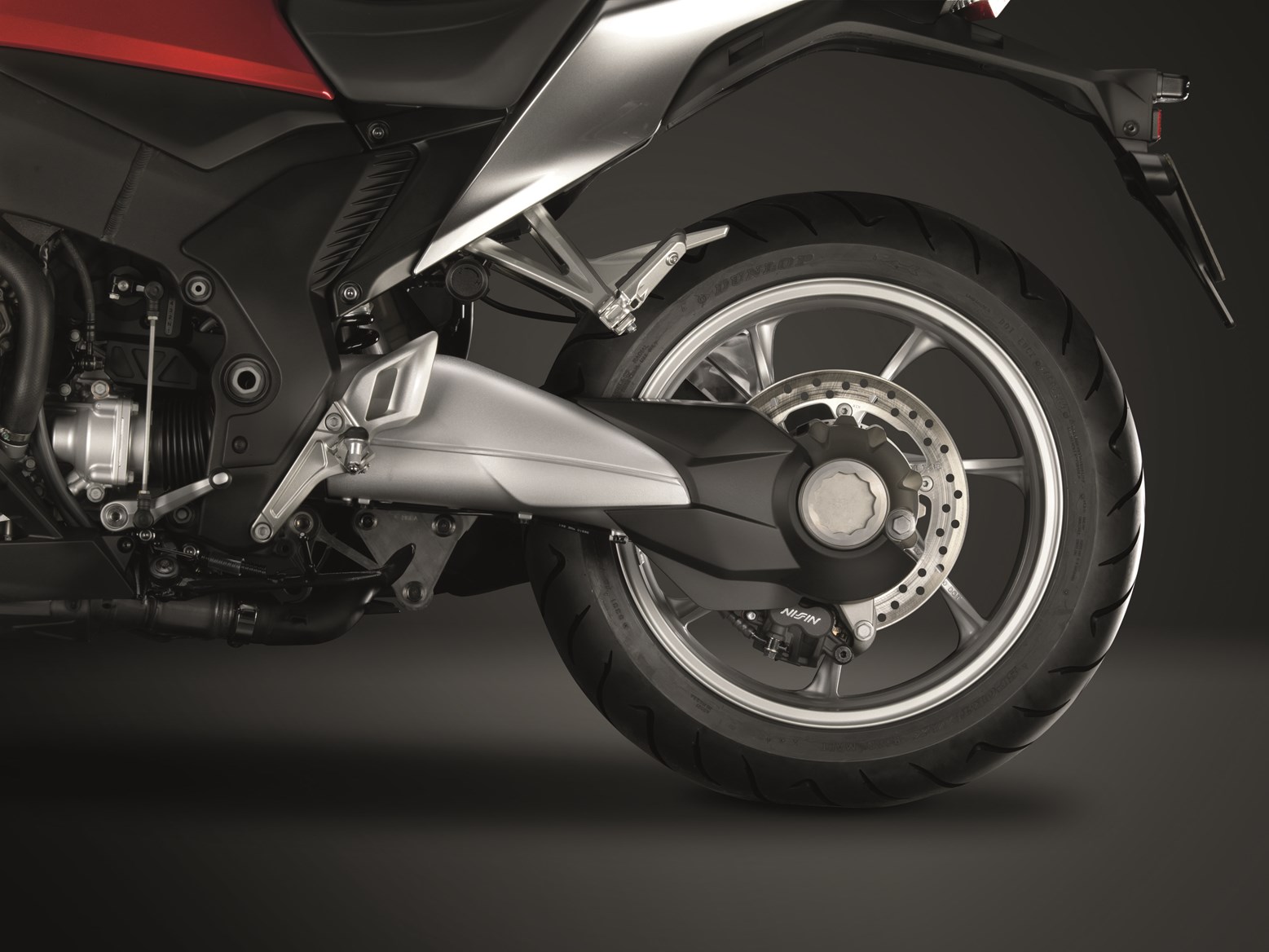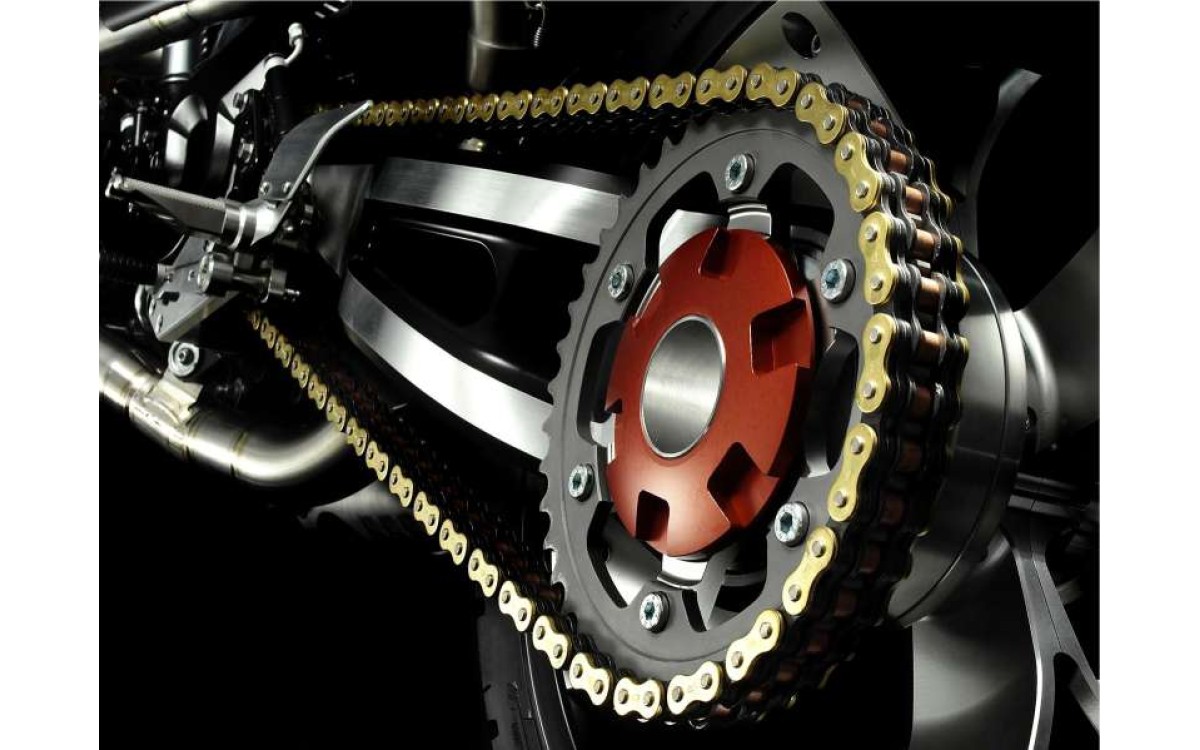Your bike’s engine may produce the grandest amounts of torque and horsepower, but they mean nothing if they are not transferred to the rear wheel, to drive the motorcycle forward.
There are three methods employed to transfer the engine’s torque and power, namely the chain, shaft and belt.
CHAIN
Also called the drive-chain, linked-chain or roller-chain, it is the most widespread form of motorcycle final drive, transferring the engine power of everything from mopeds to 1,000 bhp(that’s horsepower, not cc) motorcycle dragsters.
The chain features central rollers that are connected by sideplates. The rollers roll over the faces of the front and rear sprockets. Engine power from the transmission is fed to the front sprocket which pulls the top run of the chain, which then pulls the rear sprocket which is attached to the rear wheel. Very simple and effective.

Cleaning the chain - Courtesy of William Cannon
Pros
- The chain can be made to bestrong thus able to absorb massive amounts of torque, power and kinetic energy or light to save weight.
- Cheapest among the three types.
- It’s easy to see, clean and lubricate as it is exposed.
- The chain, front and rear sprockets are easily removable and installed.
- Gearing ratio change is easily performed.
Cons
- High maintenance. The chain needs to be lubricated every 400 km or so after cleaning. An insufficient or incorrectly lubricated chain results in a shorter lifespan, robbing engine power and increasing fuel consumption.
- Needs to be adjusted often.
- Chain lubricant may spray the rear end of the bike.
- Even a well-lubed chain is noisy, a dirty chain is worse.
- A badly maintained chain may snap and cause extensive damage to other parts of the bike or injuries to rider. A snapped or dislocated chain may also get caught in the rear wheel and cause it lock up and skid.
- Some parasitic loss can be expected as the chain absorbs the engine’s power.
BELT
Drive belts are most used on scooters and large cruisers.
In scooters, the belt has to move through several rear sprockets of different sizes that corresponds with the bike’s road speeds. As such, a belt is more practical compared to a roller chain since the former is lighter and has smooth side faces. Using a chain for this purpose will result in metal friction and impact to the different surfaces.
As for cruisers, belts are ideal as they are quiet and do not require lubrication. The lack of lubrication means oil and crud do not get flung onto other parts of the bike. Also, cruiser belts usually last much longer than chains.

Belt final drive - Courtesy of topspeed.com
Pros
- There is no need to lubricate the drive-belt.
- Only needs to wash off dirt with water.
- Cleaner than a drive chain as it does not require lubrication.
- Belts last longer than chains as there are no part that trap dirt.
- Quiet as there are no links.
Cons
- Drive-belts are made of toughermaterials hence they cost more.
- Needs careful alignment and slack adjustment i.e.both sides of the axle must align properly lest the belt will wear abnormally.
- Gear change requires replacing the pulley or pulleys and the belt also to the corresponding length.
DRIVESHAFT
There are rather numerous motorcycles that use the driveshaft, although inadvertently tied to the BMWs that use the Boxer engine. This is because the German manufacturer popularized the driveshaft on their bikes since the late 1920’s.
Currently, driveshafts are chosen for their ability to last without any or much maintenance, while transferring high amounts of torque and where high top speed is not the main concern.

Shaft drive - Courtesy of motorcyclenews.com
Pros
- A shaft final drive requires none or minimal maintenance as the whole unit is sealed from elements.
- Shaft drives are the cleanest since the shaft itself and gears are sealed, so the lubricant does not fling.
- The shaft and gear housing usually forms the swingarm. As such, there is nothing to snap, unless the motorcycle is involved in a heavy accident.
Cons
- Heavy as everything is made of tough metal.
- Expensive if something breaks.
- Gearing change involves replacing the rack and pinion gears, thus is rarely ever performed.

